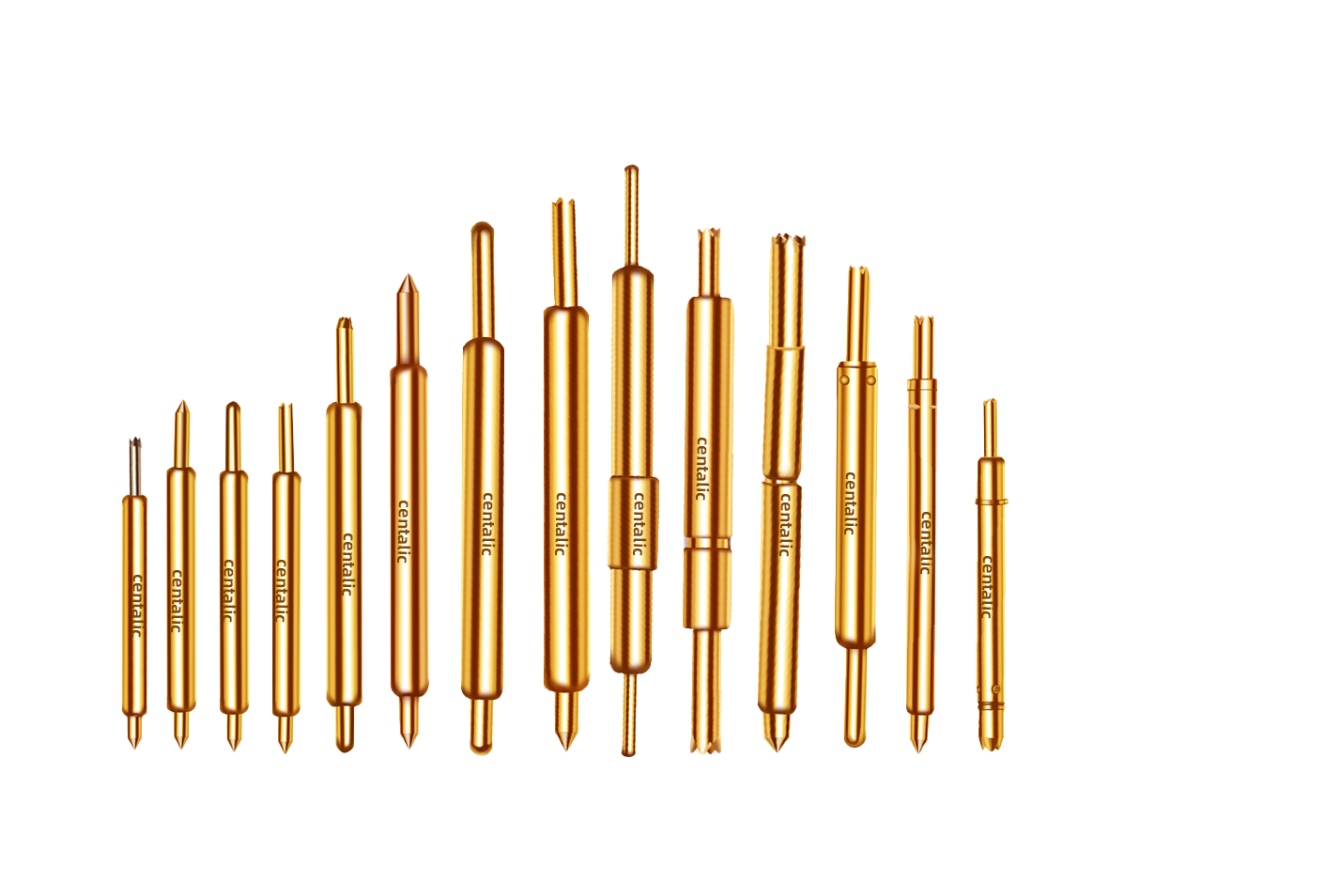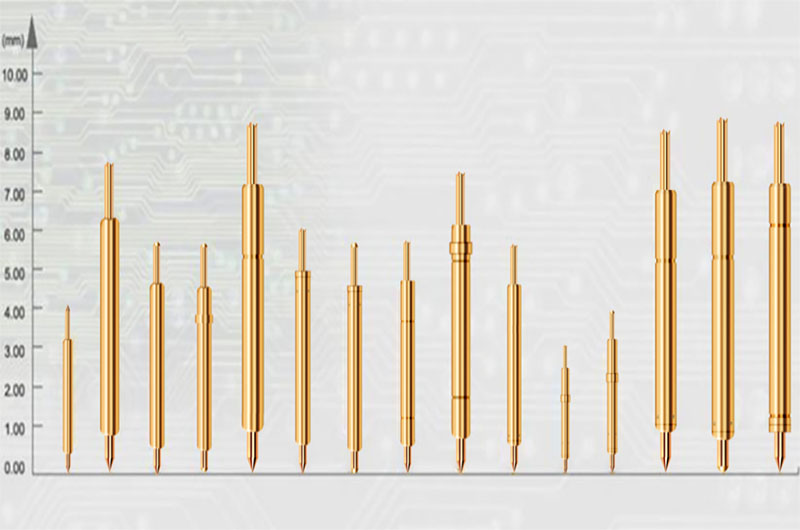
Time:2024-09-04Reading:1120Second
In the vast expanse of the semiconductor industry, as the core carrier of information technology, the improvement of chip performance and quality has always been the key to promoting technological progress. Behind this, semiconductor test pins play a crucial role as a bridge connecting chips and testing equipment. This article will delve into how semiconductor test pins can enhance chip performance through their unique role.
A probe is generally formed by riveting and preloading three basic components: a needle tip, a needle tube, a spring, and precision instruments.
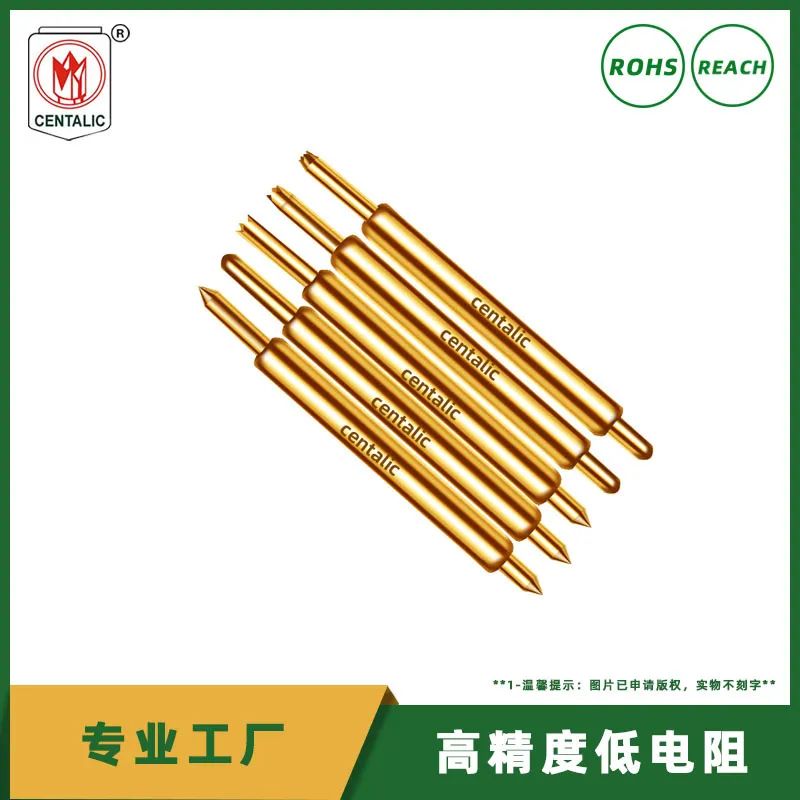
Due to the extremely small size of chip products, the size of probes is required to reach the micrometer level, making it a high-end precision electronic component with high manufacturing technology content.Centalic has40year Design of precision testing probes&Manufacturing experience, for this type of product, the minimum needle diameter can reach0.06mm.
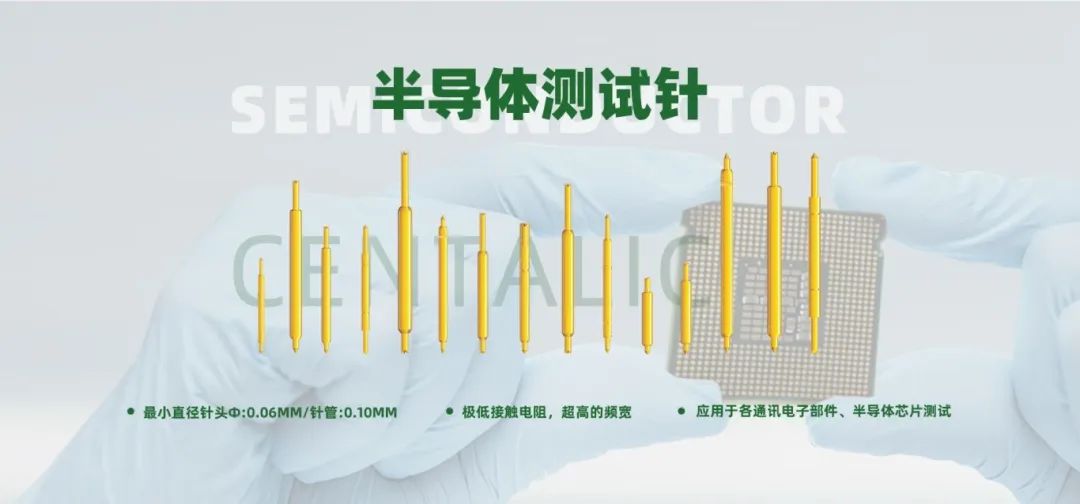
Semiconductor testing needles, as key components in semiconductor testing equipment, are mainly used in multiple stages such as chip design verification, wafer testing, and finished product testing. They are like precise "antennae" that come into direct contact with chip pins or solder pads during the testing process, achieving precise signal transmission and acquisition. This process not only verifies whether the functionality and performance of the chip meet the design requirements, but also helps engineers discover and solve potential problems through feedback mechanisms, thereby optimizing the chip design and improving overall performance.
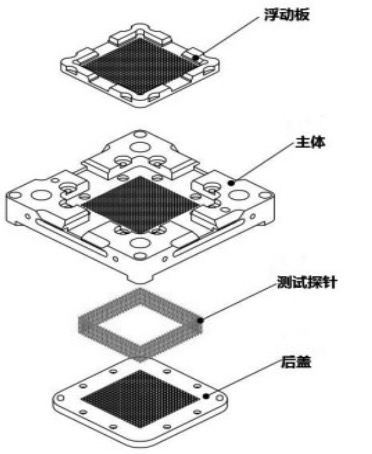
Accurate testing to ensure quality
In the process of chip manufacturing, every tiny defect can have a significant impact on the performance of the final product. Through its high-precision design and manufacturing, semiconductor test pins can achieve precise contact with various test points on the chip, ensuring accurate transmission and reception of test signals. This precise testing not only improves the reliability of testing, but also greatly reduces misjudgments and missed detections caused by testing errors, providing strong guarantees for strict control of chip quality.
Optimize design to enhance performance
In the chip design verification stage, semiconductor testing needles apply input signals to the chip and collect output signals to help engineers comprehensively understand the performance of the chip under different operating conditions. During this process, the feedback data from the testing needle provided valuable basis for design optimization. Engineers can adjust design parameters and optimize circuit layout based on test results, thereby improving key performance indicators such as chip computing speed, power consumption ratio, and stability.
Addressing challenges and driving innovation
With the continuous development of semiconductor technology, chip design is becoming increasingly complex, and the requirements for testing equipment are also increasing. As the core component of testing equipment, the technical level of semiconductor testing needles directly determines the level of testing capability. To address this challenge, researchers are constantly innovating in materials, processes, and structural design, developing more precise and efficient testing needle products. These innovations not only improve testing accuracy and efficiency, but also drive overall progress in semiconductor testing technology.
As an important part of the semiconductor industry, semiconductor testing needles play an irreplaceable role in improving chip performance with their unique role. They ensure chip quality through precise testing, optimize design to improve performance, and drive innovation in addressing technological challenges. In the future, with the continuous development of semiconductor technology, semiconductor testing needles will continue to play an important role and contribute to the continuous improvement of chip performance.
